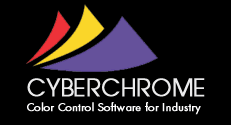.jpg?width=305&height=229&name=global-communication-353931(1).jpg)
Using electronic color standards and sharing L*a*b* color values is the goal of many companies and their supply chains these days. It’s easy, fast, and convenient. If we’re all using the same numbers for our color target, isn’t that the best way to assure that we’re all matching to the same color? It is certainly more convenient than shipping samples around overnight. But before you do so, you need to understand the best practices of color measurement and for setting and maintaining numerical color standards. Many color disputes arise these days because color instruments don’t necessarily read the same. Electronic or numerical color standards are widely used and shared within a supply chain and have many benefits, but if all of your instruments are not regularly monitored and calibrated, then problems can arise.
Electronic color standards are used widely in the coatings, plastics, textile, and printing industries. As Shelley Sturdevant, the North American Technical Director for Coil and Extrusion Coatings for PPG will tell you, the benefits are huge in terms of consistency of color, easy global color communication, and cost effectiveness if done properly. Color can be communicated instantly around the world and manufactured consistently to the same stored color standard. Electronic color standards are permanent and don’t change with use and over time. Read more of her comments in “Spot On: Lessons From a Color-Matching Master”. But what do you need to know and understand about the process in order to make it work for you? This blog lays out 10 key points that you need to pay attention to and sets the stage for the next 10 blogs which will delve into each item in more detail.
Future blogs will discuss each of these 10 aspects of using electronic color standards to help you avoid some of the pitfalls. Click on the links below for a more detailed discussion of each topic:
- Instrumentation – It all starts with the instrument!
- Measurement Conditions – What do you need to specify?
- Physical standards – Don’t I just grab a sample and measure it?
- Inter-instrument agreement - How do you determine it? What if I want to compare my spectrophotometer to my supplier’s or someone else’s instrument in the supply chain? Can I do this myself?
- Monitor Instrument Performance –Is the green tile test really enough?
- Instrument Profiling – or how to improve your inter-instrument agreement
- Sharing the data – How?
- Sample presentation – What are the variables?
- Translucency & Fluorescence – What types of physical samples just don’t work well with electronic standards?
- Do an audit – The ultimate test for “Is it really working?”
Does your company use electronic color standards? Within just your company or with your supply chain?
